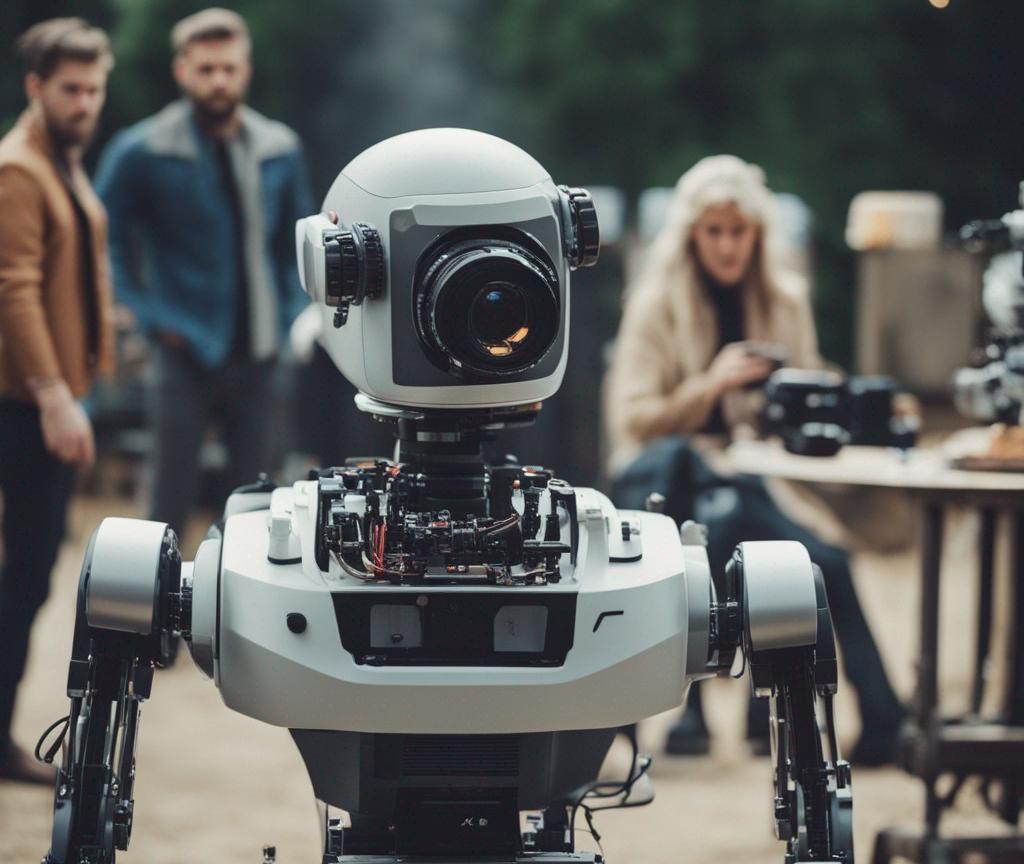Artificially Replaced: The AI Takeover Leaving Actors in the Shadows

The world of entertainment and artificial intelligence (AI) collided recently in an unsettling manner, as NPR reported that several background actors from Disney's widely celebrated series, WandaVision, divulged experiences of having their bodies and faces scanned to generate AI-powered digital duplicates. What makes this situation alarming is that the scans were done without obtaining the actors' permission or consent, triggering an outcry from the Screen Actors Guild - American Federation of Television and Radio Artists (SAG-AFTRA), which has since gone on strike.
The core of the discord lies in the potential application of AI in mimicking or even replacing actors and performers, ranging from background roles to leads. This prospective utilization of AI technology poses a significant threat to the industry, causing fear and apprehension among actors.
The strike may have officially commenced this summer, but the controversy didn't emerge overnight. The entertainment industry has been toying with digital scanning and AI technology for several months, if not years. Interviews conducted with background actors reveal that they had their likenesses scanned on set as far back as during the filming of WandaVision season 2.
The Unsettling Encounter of Alexandria Rubalcaba

Delving into the heart of the matter, the encounter of a background actor named Alexandria Rubalcaba serves as a notable case study. Rubalcaba was part of the ensemble in the Disney+ series, WandaVision, shot in the midst of the global pandemic. In an interview with NPR, she painted a vivid picture of an experience that seems to be drawn straight out of a science fiction narrative, yet was all too real.
Rubalcaba recounted being led to an unassuming trailer on set. Inside the trailer was an impressive, perhaps even intimidating, technological setup. Cameras, arranged on cold, metallic rings and encased behind panes of glass, waited to capture every facet of her image. This elaborate equipment was part of a high-tech process known as photogrammetry, used to generate detailed 3D models based on a series of 2D images taken from multiple angles.
The scene was more akin to a highly advanced security screening than a standard day on a film set. Rubalcaba was then provided with a string of instructions: "Have your hands out. Have your hands in. Look this way. Look that way. Let us see your scared face. Let us see your surprised face." She recited these prompts from her memory of the NPR interview, casting a sharp light on the strange and unfamiliar procedure.
Interestingly, Rubalcaba was far from being the sole actor subjected to this unconventional procedure. She was merely one of the dozens of actors who were ferried into the trailer to undergo similar recording sessions. Each one likely faced the same set of instructions and the same inscrutable camera array.
Digital Replicas: Usage and Pay

Despite the extensive data collection, a shroud of secrecy surrounded the intended use of these scans. Actors were left to grapple with uncertainty and speculation. Would these digitized replicas of their likeness ever make it to the screen? If so, how would they be used? Adding to the distress is the fact that there is no mechanism in place for them to verify the use of their digital replicas or demand appropriate remuneration.
While actors like Rubalcaba are entitled to a standard pay rate set by the SAG-AFTRA union, which in her case amounted to $187 for her day's work, the question of compensation for the digital use of their likeness remains unresolved. In her conversation with NPR, Rubalcaba revealed that she never consciously gave her consent for the creation or use of digital versions of herself in any scene.
However, the case of Rubalcaba is far from an anomaly. Numerous interviews conducted by NPR with other background actors have unearthed similar stories and concerns. They paint a picture of an industry-wide trend that has been simmering for several years, culminating in the SAG-AFTRA strike that broke out earlier this summer.
AI's Role in Filmmaking

The intersection of AI technology and filmmaking is not entirely new. Scans and digital replicas have been utilized to create crowd scenes for a significant period, but it's the exponential growth and sophistication of AI that's driving the current sense of unease. The potential for AI to usurp roles traditionally played by actors poses what could be the most formidable existential challenge to the industry yet.
The future of the film and television industry appears to be on a collision course with the advent of advanced AI technologies, leaving an array of questions in its wake. Among these, the fate of background actors and performers involved in any project hangs in the balance, their concerns heightened by the rapid technological advancements, and yet, remaining largely unaddressed.
Key questions demand attention: Can union officials negotiate distinct pay scales accounting for the use of digital replicas? What might a fair compensation scheme look like for such a novel concept? Could the progression of AI technology render background acting a relic of the past?
For now, these questions remain unanswered, creating a palpable tension within the industry. As more stories like these come to light, it becomes clear that a resolution needs to be found urgently. The very fabric of the industry could be at risk. There's no denying that AI has the power to radically transform the entertainment industry. However, the pertinent question remains - what price are we willing to pay for this revolution?
